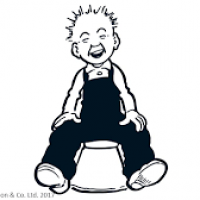High Speed Weave
Can this be due to low tire pressure?
Comments
-
have you tried a higher tire pressure to see if it goes away?.
The camera down the willy isn't anything like as bad as it sounds.
1 -
Is tire pressure similar to pier pressure?1
-
Also, what speeds are we looking at?.
The camera down the willy isn't anything like as bad as it sounds.
0 -
Headset bearings. Too tight or have got a bit pitted.0
-
Is this a shimmy? Or is a shimmy different to a weave, in the same way that porpoising is not bouncing?
If it is a shimmy, it will be a blighter to track down. Could be something as simple as a slightly untrued wheel. Could be your balance on the bike, too much weight on the front, that sort of thing. Can be set off just by the terrain combined with a certain speed.
Question I have is whether you know how to stop it, because sometimes a knee against the top tube can make it a non-issue. Versus high siding into the path of a lorry as you fight for control.0 -
Why don't we start withvthecsimple things:
pump up the tyre
swap over front wheel
then start taking things part.The camera down the willy isn't anything like as bad as it sounds.
0 -
A Net search shows "weave" at speed is described with motorcycles due to both low tire pressure and loose bearings.
"Weave", as per this discussion, is the side to side movement of the bike's line of travel and lean at speed. My experience occurred when doing over 30 mph (down hill as I can't hit that on the flats), with or without pedaling. Think movement/feedback in terms of a downhill slalom course on skis.
My wheel bearings are not loose. So the variables under consideration are: side to side wheel-flex due to low spoke count; and wider rims at 50 psi tire pressure.
It does not occur with my sturdier rims that are narrow (13 mm internal width) and have a higher spoke count (twice as many) with the same tires (28 C) and tire pressure (50 psi). The latter, old Campy wheels, do not flex when side pressure is applied at the top of the wheel when mounted on the bike.
OTOH, there is considerable flex with the wider Bontrager rims (19.5 mm internal width, no spoke crossover on the front wheel) with side pressure.
BTW, the spokes on both sets of wheels are tight, the wheels are true, and the bearings are properly adjusted.
The question now is whether the combination of the low 50 psi and wider rims was at fault or was the side to side wheel flex, alone or in combination with the above, a causal factor?
The wider rims result in a more vertical tire profile and perhaps this allows more side to side flex than the more rounded profile on narrower rims.
If so, this could initiate a slight lean/weave which could then be further amplified by wheel flex.
0 -
50 psi is very low unless your running tubeless. Even then it’s still low.0
-
I don't go as low as 50psi on my graveller 38mm tubeless tyres. 50psi does sound v low for a road bike on 28s.0
-
not sure tbh.DRWILBERS said:A Net search shows "weave" at speed is described with motorcycles due to both low tire pressure and loose bearings.
"Weave", as per this discussion, is the side to side movement of the bike's line of travel and lean at speed. My experience occurred when doing over 30 mph (down hill as I can't hit that on the flats), with or without pedaling. Think movement/feedback in terms of a downhill slalom course on skis.
My wheel bearings are not loose. So the variables under consideration are: side to side wheel-flex due to low spoke count; and wider rims at 50 psi tire pressure.
It does not occur with my sturdier rims that are narrow (13 mm internal width) and have a higher spoke count (twice as many) with the same tires (28 C) and tire pressure (50 psi). The latter, old Campy wheels, do not flex when side pressure is applied at the top of the wheel when mounted on the bike.
OTOH, there is considerable flex with the wider Bontrager rims (19.5 mm internal width, no spoke crossover on the front wheel) with side pressure.
BTW, the spokes on both sets of wheels are tight, the wheels are true, and the bearings are properly adjusted.
The question now is whether the combination of the low 50 psi and wider rims was at fault or was the side to side wheel flex, alone or in combination with the above, a causal factor?
The wider rims result in a more vertical tire profile and perhaps this allows more side to side flex than the more rounded profile on narrower rims.
If so, this could initiate a slight lean/weave which could then be further amplified by wheel flex.
sorry.
but have you triedpumping your tires up?.The camera down the willy isn't anything like as bad as it sounds.
0 -
Not some kinda new technique for rapid braiding at an afro hair salon?
Sometimes. Maybe. Possibly.
0 -
Some "weave" remains with higher tire pressures. Even so, this does not exclude "tire squirm" as a component.
The contribution of "wheel flex" also remains a possible factor.
Not previously noted is the very severe "wheel flop" with the current bike set up. My limited reading suggests this is limited to low speeds as a handling factor but could it also be a factor at speed? (With the Campy wheels, the bike is easily pushed by the saddle in a straight line, while with the Bontragers the front wheel immediately flops to one side.)
One further note. The Campy wheel/tire's have a smaller diameter than the Bontrager wheel/tire's. As smaller wheels result in less trail and less wheel flop, and the weave does not occur with them, is this a clue as to the cause?
0 -
how high have you taken the tire pressures (tp) to try and eliminate the issue?
We presume that you raised both front (f) and rear (r) pressures?.The camera down the willy isn't anything like as bad as it sounds.
0 -
Thanks for all of the responses.
Please see the previous post.
It is more than just tire pressure.
BTW, this issue does not keep me from using the bike with the wheels that produce the "weave" tendency. It is not crash provoking by any means and would go unnoticed by most.
I'm more interested in the mechanics-physics involved.
One further note. GCN recently had a video recommending 50 psi with 28 C tires on wide rims. While the "weave" issue may be one con, the other is the front rim bottoms out when hitting a squared off low curb at this pressure.
As to rolling resistance, more on that with another thread.
0 -
My solution is to ignore this thread.The above may be fact, or fiction, I may be serious, I may be jesting.
I am not sure. You have no chance.Veronese68 wrote:PB is the most sensible person on here.1 -
If your tyres are bottoming out then it is tyre pressure. Do you carry a bit of excess lard as this may also cause the weaving.0
-
GCN recommend a lot of stuff.DRWILBERS said:Thanks for all of the responses.
Please see the previous post.
It is more than just tire pressure.
BTW, this issue does not keep me from using the bike with the wheels that produce the "weave" tendency. It is not crash provoking by any means and would go unnoticed by most.
I'm more interested in the mechanics-physics involved.
One further note. GCN recently had a video recommending 50 psi with 28 C tires on wide rims. While the "weave" issue may be one con, the other is the front rim bottoms out when hitting a squared off low curb at this pressure.
As to rolling resistance, more on that with another thread.
unless it NFNATN who only says the truth, we wouldn't recommend believing a lot that is on internet programmmes/shows..The camera down the willy isn't anything like as bad as it sounds.
0 -
Obviously this thread has descended a fair bit from the original objective, but FWIW I am 67kg (ie pretty light) and I run 28mm tubeless on wide rims. I have experimented a lot with pressures and a tad under 60psi seems the sweet spot.
There is a point where you drop too low and the tyre squirms around. Not sure if it causes a 'weave' but the handling certainly feels off. 50 psi would be well under that for me, so unless you are lighter than 67kg I would suggest moving up to at least 60.
With tubed 28s on wide rims I would be running 75psi - 50 would feel awful and you'd have a really high likelihood of pinch flats1 -
Super, Thanks. Good info.0
-
Matt and all others,
Thanks for your feedback also.
Lar1 -
For clarification, I use the terms wobble, head-shake, and shimmy to describe the same thing and it seems "different" from the "weave" observed.
I've experienced the former, also at high speed.
The latter is a very slow and mild oscillation.
Maybe "weave" is just a very mild version of head-shake/shimmy?
I could try Matt's suggestion of the knee against the top tube and see if that controls it, although I'll have to return the bike to the previous kit and tire pressures to do that so it may be awhile.
Getting ready to ride a century this weekend and the bike appears to be completely sorted out at this point. So no changes for a while.0 -
My buddy at 68kg rides 28s tubeless and runs 60psi front and 65 rear ,anything below that and he complains of squirm .
0





